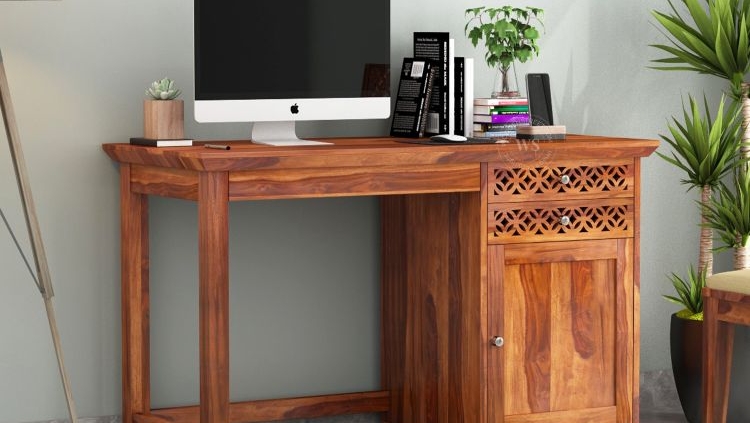Ergonomic Computer Table Choices for Comfortable Work Setup
In today’s fast-paced digital world, having the right workspace can significantly influence both productivity and well-being. One essential element of a functional workspace is a computer table. Selecting an ergonomic computer table not only enhances comfort but also promotes good posture and reduces the risk of musculoskeletal issues. With various designs, materials, and features available, understanding how to choose the ideal computer table can transform your work experience.
Understanding the Importance of an Ergonomic Computer Table
A computer table is more than just a surface to place your laptop or desktop. It serves as the foundation of your work environment. An ergonomic computer table is specifically designed to ensure that your body maintains a neutral position while working. This reduces strain on your neck, shoulders, and back, which are common areas affected by long hours of sitting. Unlike conventional tables, ergonomic computer tables often come with adjustable heights, keyboard trays, and ample legroom, allowing you to customize your workspace to fit your unique needs.
Features to Look for in a Comfortable Computer Table
When searching for a computer table, functionality should be just as important as aesthetics. One key feature of ergonomic tables is adjustable height. This allows users to alternate between sitting and standing positions, which is beneficial for circulation and overall health. Another important consideration is the presence of storage solutions. Many ergonomic computer tables come with built-in drawers, shelves, or compartments to keep essential items organized and within reach. Cable management systems are also a valuable feature, reducing clutter and creating a clean, distraction-free workspace.
Materials and Design Considerations
The material of a computer table affects both its durability and the visual appeal of your workspace. Wooden computer tables are a popular choice due to their sturdiness and timeless elegance. They can blend seamlessly with various interior designs, from modern minimalist offices to traditional home setups. Metal and glass options are also available, offering a sleek, contemporary look. In addition to materials, the overall design plays a crucial role in comfort. Curved edges, sufficient legroom, and an appropriately sized tabletop can make long work hours much more manageable and enjoyable.
Customization for Personal Comfort
Every individual has different needs when it comes to a workspace. Some may prefer a larger desk area for multiple monitors, while others may prioritize compact designs suitable for small rooms. Ergonomic computer tables often allow customization to match personal work habits. Adjustable keyboard trays, monitor stands, and tilting surfaces are features that can significantly improve comfort. Choosing a computer table that adapts to your body and workflow ensures a healthier posture and can even enhance focus and efficiency during work or study sessions.
Impact on Productivity and Health
Investing in an ergonomic computer table is not just about comfort; it directly impacts productivity. A well-designed table encourages proper posture, which reduces fatigue and discomfort. This allows for longer periods of concentrated work without unnecessary strain. Additionally, a tidy and organized table with integrated storage solutions can minimize distractions and make it easier to access documents, stationery, or electronic accessories. Over time, a comfortable work setup can lead to improved efficiency, better time management, and overall satisfaction with your workspace.
Choosing the Right Size and Layout
Selecting the correct size of a computer table is crucial to ensure comfort and usability. A table that is too small can feel cramped and limit your workspace, while a table that is too large can overwhelm a room and make reaching essentials inconvenient. Consider the number of devices you use regularly, including laptops, monitors, printers, and other accessories. Layout is also important; L-shaped or corner tables can optimize space in smaller rooms, whereas rectangular tables may suit open-plan offices or larger areas. The goal is to create a workspace that feels natural and accessible while maintaining ergonomic benefits.
Modern Innovations in Computer Tables
Technology and design trends continue to influence the development of ergonomic computer tables. Many modern tables now feature built-in USB ports, wireless charging pads, and smart cable management systems. Some tables also incorporate adjustable LED lighting or monitor arms to reduce eye strain and create a personalized workspace environment. These innovations enhance the functionality of a computer table, making it not just a place to work but a fully integrated hub that supports productivity and comfort simultaneously.
Final Thoughts on Ergonomic Computer Table Choices
Investing in the right computer table is a decision that can have long-lasting benefits for both your health and work efficiency. Ergonomic computer tables with thoughtful designs, ample storage, and customization options offer the comfort needed for prolonged work hours. Whether you choose a wooden computer table for its durability and classic appeal or a modern metal and glass design for a sleek look, prioritizing ergonomics ensures that your workspace supports your well-being. A comfortable, organized, and functional computer table ultimately leads to a more productive and enjoyable work experience.



Leave a Reply
Want to join the discussion?Feel free to contribute!